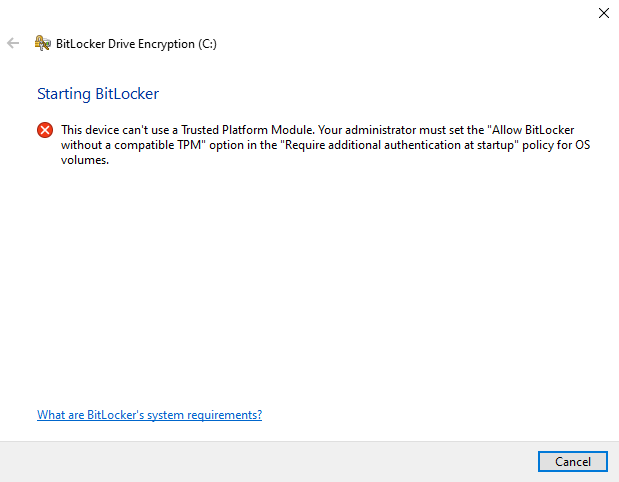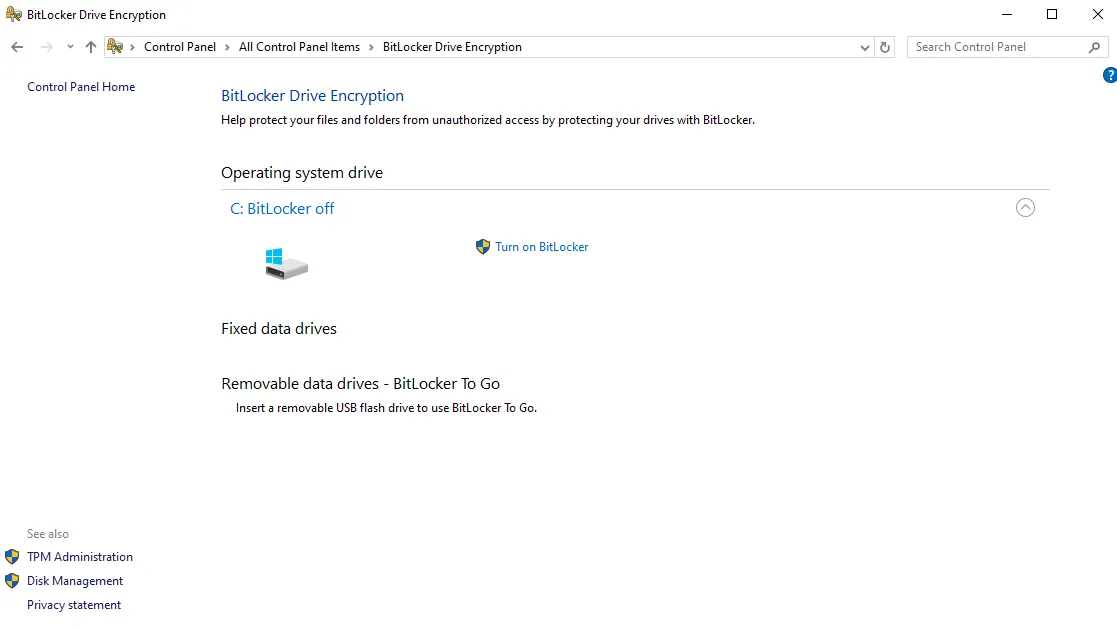Fix BitLocker Error: “This Device Can’t Use a Trusted Platform Module” (2025 Guide)
If you see the “This device can’t use a Trusted Platform Module” message while turning on BitLocker, don’t panic—this is common on Windows 10 and 11. The error means Windows can’t use a TPM (Trusted Platform Module) for key protection. Either TPM is missing/disabled, or you’re on hardware/VM without vTPM. The good news: you can still enable BitLocker without TPM safely and start protecting your data.

Why the BitLocker TPM Error Appears in Windows 10/11
By default, BitLocker expects a hardware TPM to securely store encryption keys. You’ll see this message when:
- TPM is disabled in BIOS/UEFI (after firmware reset or motherboard change).
- The system has no TPM chip at all (common on older PCs).
- You’re using a virtual machine without vTPM enabled.
BitLocker can still work without TPM using a startup password or USB key—you just need to enable that option via Group Policy.
Fix BitLocker Error: Enable BitLocker Without TPM (Safe Method)
Follow these steps to turn on BitLocker even if your computer doesn’t have a TPM chip:
- Press Win + R → type
gpedit.msc→ hit Enter. - Navigate to:
Computer Configuration → Administrative Templates → Windows Components → BitLocker Drive Encryption → Operating System Drives - Double-click Require additional authentication at startup.
- Select Enabled.
- Check Allow BitLocker without a compatible TPM (requires a password or startup key on a USB flash drive).
- Click Apply → OK and restart your computer.
- Then open Control Panel → BitLocker Drive Encryption and enable BitLocker.

Important: Save your BitLocker recovery key in a secure place—preferably both to your Microsoft account and a USB drive.
Alternative Fix for BitLocker Error: Enable TPM in BIOS or UEFI
If your device includes TPM but it’s disabled, enable it manually:
- Restart your PC and press the BIOS key (F2, F10, Del, or Esc).
- Open Security → Trusted Computing.
- Enable TPM (may appear as PTT or fTPM).
- Save changes and reboot your computer.
Quick Verification & Security Tips
Check TPM status quickly by pressing Win + R and typing tpm.msc.
If it says “TPM is ready for use,” you’re good to go.
If you’re new to BitLocker encryption, read our step-by-step setup guide here:

FAQ: BitLocker “No TPM” Error
Can I use BitLocker without TPM?
Yes. You can enable BitLocker without TPM using a password or USB startup key after changing the Group Policy setting.
Is it secure to use BitLocker without TPM?
Yes—just make sure you store your recovery key safely. Without TPM, encryption keys aren’t stored in hardware, so security depends on password strength.
Can Windows 11 Home users apply this fix?
The Group Policy Editor isn’t included in Home editions. You can upgrade to Pro or modify the same policy using the Registry Editor.
Does BitLocker To Go need TPM?
No. BitLocker To Go encrypts USB drives without TPM support using a password.
Where can I learn more about BitLocker?
Check Microsoft’s official documentation:
BitLocker Overview – Microsoft Docs
Whether you’re using BitLocker on a work laptop or your personal PC, enabling encryption without TPM still provides strong protection for sensitive data. It’s especially useful for users who handle confidential files but don’t have a modern motherboard with built-in TPM. Combining BitLocker without TPM and secure password management gives you enterprise-level Windows security at no extra cost.
Final Tip: Always back up your recovery key before encrypting your drive. Interrupting encryption or losing your key can cause permanent data loss.
For more security tutorials, visit SupportSolved’s Windows Security Section.
